Menu
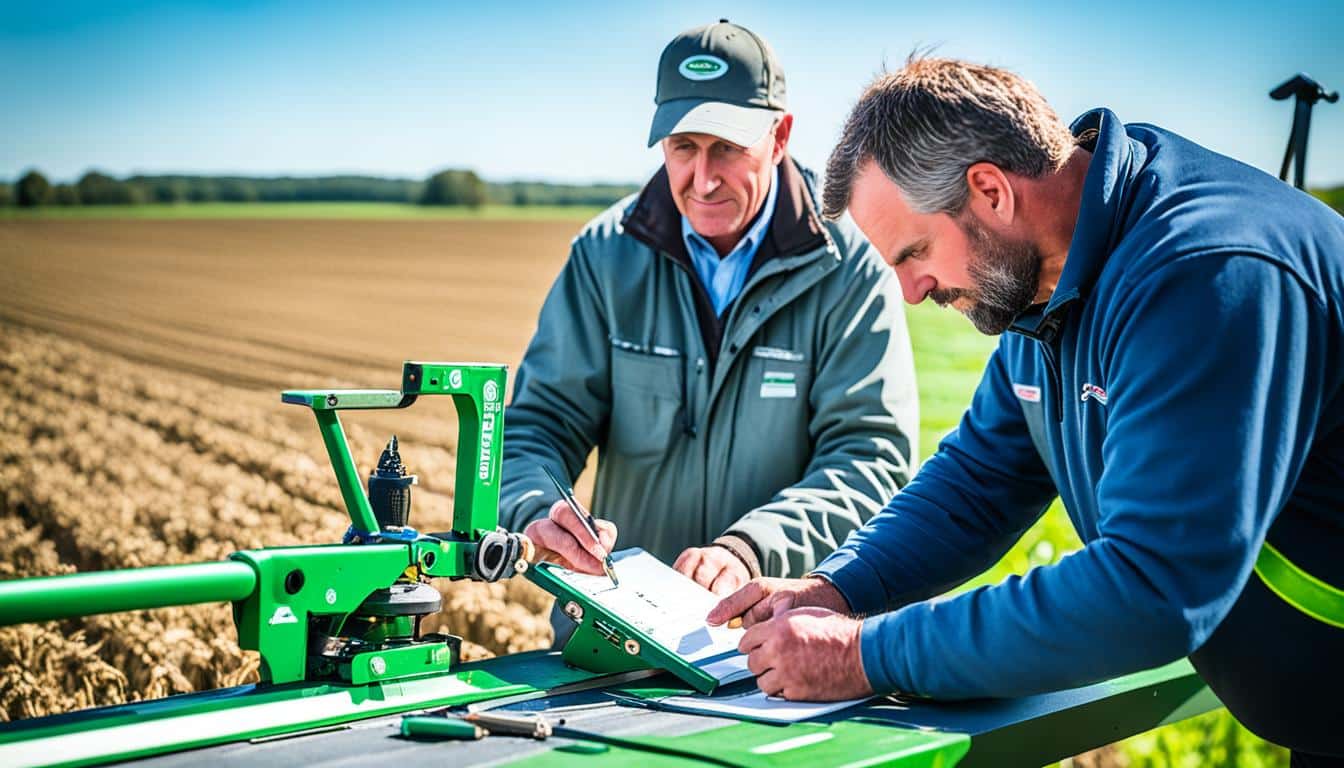
Work-Related Musculoskeletal Disorders (WMSDs) are common among those in farming, forestry, and fishing. They occur 61.5% of the time, much more often than in other jobs (25.1%). This high rate shows why checking for ergonomic risks on farms is vital. It helps lower chances of getting hurt. And by changing how jobs are done, we reduce risks of back and shoulder pain, and arm and hand aches.
Checking for ergonomic risks on farms means looking at work in a detailed way. This involves watching how tasks are done, talking to the people doing the work, and studying past injuries. Risks often come from using machines, moving things by hand, or dealing with animals. By working with experts in ergonomics, farms can find smart and cheap solutions. These solutions work for different crops and farm sizes, saving money by cutting down on injuries and compensation costs.
Ergonomic risk assessments are crucial for keeping farm health and safety up. They deal with work-related musculoskeletal disorders (WMSDs). These are the top cause of disability for fertile age adults. The check-ups help spot risks in farming. This leads to making the workplace better for workers. It improves their comfort, agricultural workplace ergonomics, safety, and how productive they are.
Looking at agricultural workplace ergonomics helps us stop preventing farm injuries. This saves a lot of money that could go into paying injury claims. Studies show that these disorders are common among farmers. For instance, in a review, over half of them (55.2%) had these issues. In Iran, 67.2% of apple harvesters got affected. In India, it was 62.3% of manual harvesters. It clearly shows we need to check workplaces carefully.
These checks really look into risky jobs. They help by suggesting ways to make things better and prevent arm and hand pains. For example, using smaller tubs for grapes or making orchard ladders closer together. Also, using long-handled hoes for weeding has been good. Training in ergonomics can also really help stop these health problems.
Consider this compelling data:
| Region | Task | Prevalence Rate of MSDs |
|---|---|---|
| Iran | Apple harvesting | 67.2% |
| India | Manual harvesting | 62.3% |
| General Agriculture | Various tasks | 55.2% |
Making sure farms get checked for ergonomic risks is key. This helps protect workers from harm. Introducing ergonomic ways that fit different farms can make things safer. It can reduce the number of farm injuries and make agriculture more sustainable.
Conducting an effective ergonomic risk assessment on farms is key to safety. We’ll look at three main areas: machinery use, manual work, and handling of animals. By checking these, we can find risks and make sure farms are safe.
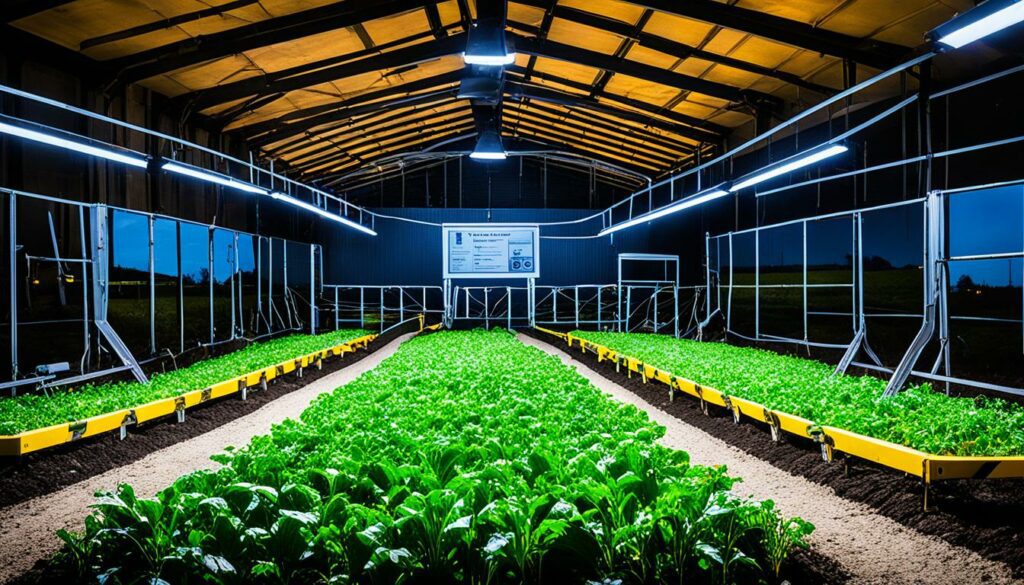
Using machines, tools, and equipment is part of farm work. We need to see if the way we work can hurt us. This includes checking for bad poses, lots of repeating movements, and using too much force. Using special tools can help find and fix these dangers, reducing the risk of getting hurt.
Lifting, carrying, and moving things by hand is what manual handling is about. It can lead to muscle and joint problems. This is because of repeating the same actions, working in strange poses, or standing still for long times. Proper checks with the right tools can help us do this work better and safer.
Stock handling means working closely with animals like cows and sheep. Jobs in dairy, such as cleaning manure or operating milking equipment, can be risky. Special assessments, like the REBA method, can show us these risks. They remind us to take action and make things less dangerous.
| Task | Risk Level |
|---|---|
| Manure Disposal | High |
| Filling Feed Bags | Very High |
| Pouring Milk | High |
| Milking | Very High |
Studies say farmers have a 51% higher chance of hurting their bodies. The assessment needs to look at all activities, even the ones we might forget. By focusing on detailed checks and the right tools, farms can make work safer.
Agriculture leads to issues like backaches and shoulder pain. These problems come from the hard work and the way it’s done. In this article, we will talk about these challenges and how they effect work and safety.
Backaches worry many farm workers due to the need for bending and lifting. This is worse when doing tasks like planting and harvesting. Using ergonomic best practices in agriculture can help lessen this issue and improve how workers feel and work.
Shoulder and arm pain are common in farming, especially from overhead work. Doing jobs like pruning puts strain on these body parts. Studies show farming can be more dangerous for these injuries than other jobs, a huge 100 times worse. By focusing on agricultural workplace ergonomics, we can make things safer and better for workers.
Repetitive strain injuries (RSIs) are also a big problem in farming. Tasks that repeat, like ploughing, can cause RSIs. The numbers are high, with vineyard workers facing an 80 in 1,000 chance. These injuries slow work and cost a lot in healthcare. Using ergonomic best practices in agriculture can make working in farms safer and cheaper.
Solving these problems helps workers feel better and keeps the farm running well. Adding what studies tell us about ergonomics can make a big difference. It helps everyone in farming stay healthy and do their best work.
It’s crucial to do ergonomic risk assessments on farms to lower work-related injuries and make farms safer. These assessments use a methodical process. This includes watching work in action, talking to workers, and looking at past injuries closely.
The first step is watching the work. I watch tasks like using machines and moving things by hand. This helps me see what’s hard on the body. It’s important to understand how workers use tools and repeat tasks. This can help figure out why they get back or shoulder pains.
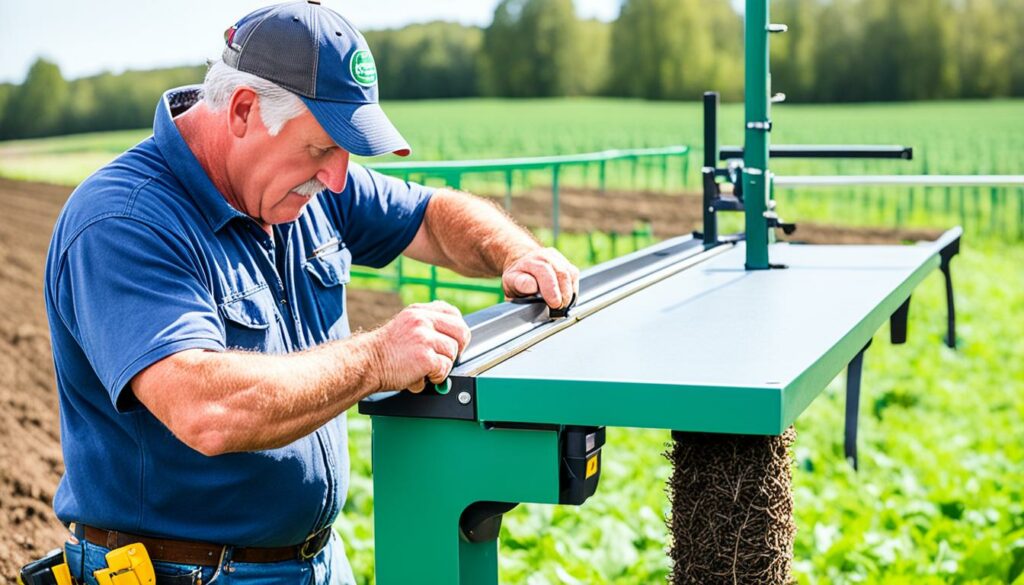
Talking to the farm workers is key. They know a lot about their job and the risks they face. Their stories give me clues about unseen dangers. Together, we can find smart ways to stop farm injuries.
The last part is looking at injury records. This shows where the most problems are. For example, back injuries might happen a lot when doing a certain job. By knowing this, I can focus on fixing those issues. This makes the workplace safer for everyone.
Doing these assessments helps make the farm safer and more productive. It cuts down on injuries, saving money, and giving workers a better place to work.
It’s crucial to understand and use ergonomic tools for full farm safety. These tools help check how work happens, the tools used, and even how workers stand. They find and fix risks that could cause musculoskeletal disorders from work.
Checklists and surveys are great for spotting risks in a step-by-step way. They look closely at farm tasks, tools, and how work is set up. This lets farms carefully check for dangers and make plans to keep workers safe and healthy.
Posture tools spot bad positions that could hurt workers. They help catch bad postures early and fix them. For example, the AULA tool has been proven very effective in preventing injuries compared to others. Using such tools makes a big difference in cutting down on work injuries.
This table shows how well these posture tools perform based on recent studies:
| Ergonomic Tool | Average Hit Rate (%) | Kappa Value |
|---|---|---|
| AULA | 48.6 | 0.718 |
| RULA | 33.3 | 0.599 |
| REBA | 30.1 | 0.578 |
| OWAS | 34.4 | 0.538 |
Using a mix of checklists, surveys, and posture tools helps farms make real ergonomic changes. This improves safety across the farm.
Spotting high-risk jobs on farms is crucial for putting ergonomic best practices in agriculture to work. You need to closely look at what workers do to find what’s risky. Tasks like bending a lot, lifting heavy things, or working in strange positions can be very risky.
In 2018, the U.S. Bureau of Labor Statistics reported 146 deaths linked to tractor work. This proves the huge danger of using big machines on farms. It’s clear we must carefully check all jobs that use machines to keep workers safe.
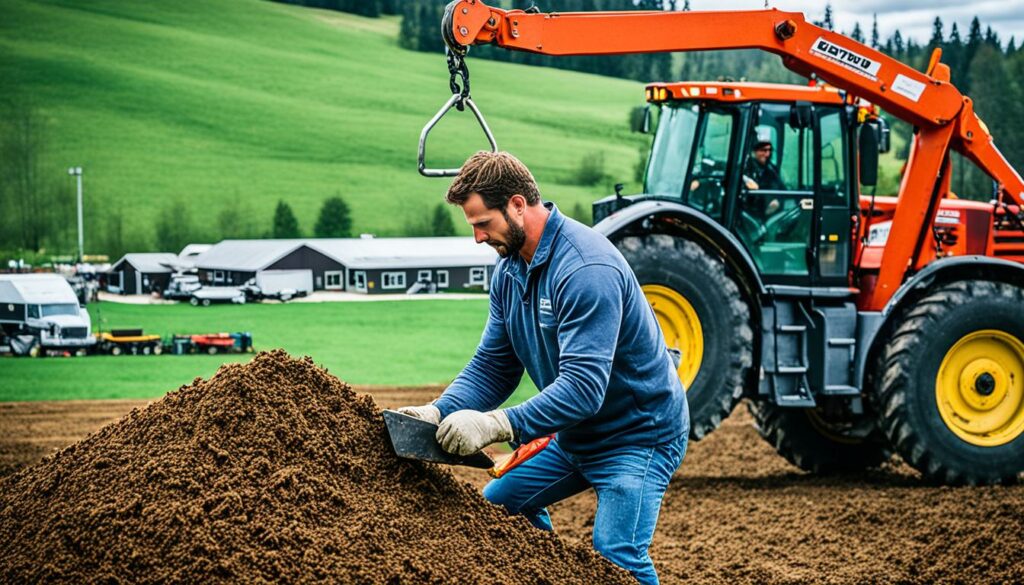
Aside from big machines, bad weather like droughts, typhoons, and intense heat can make work more dangerous. They can hurt crop growth and animal health. And don’t forget about diseases that animals can give humans. These include Rabies, Bovine Tuberculosis, Campylobacteriosis, Ringworm, and Influenza. Recognising these dangers is key to taking specific actions that stop injuries on the farm and keep workers safe.
Using the right safety gear is vital. This includes long-sleeved shirts, gloves, face masks, and strong boots. It’s just as important to train everyone in farm safety. This means teaching them how to safely use tools, handle chemicals, read animals, and react to emergencies.
| Hazard Type | Examples | Mitigation Strategies |
|---|---|---|
| Physical | Heavy machinery, extreme weather | Regular maintenance, use of PPE |
| Biological | Livestock diseases | Vaccination, hygiene protocols |
| Ergonomic | Repetitive tasks, awkward postures | Task rotation, ergonomic tools |
Doing regular checks for risks is smart. They help find and fix dangers, as well as plan for emergencies. It’s really important for farms to make safety a big part of their everyday. By dealing with the tasks that are more likely to cause harm, farms can work better by the rules of good farming ergonomics. This makes the work environment safer, stopping farm injuries.
Tackling ergonomic issues in farming isn’t just about spotting problems. It’s also about putting in place solutions to make work easier and better. Doing this means understanding how farming jobs can hurt people and using the right tools to fix them.
One thing we know is that lots of farm workers suffer from back pain and ache in their arms and hands. This comes from how they have to work – bending down, lifting heavy things badly, or doing tasks over their head. It can lead to lots of money being spent on fixing their health – over $22 million in California just on back injuries.
To beat these problems, we need to make tools and jobs easier. Adding long handles to tools stops people from bending too much. Also, changing how tasks are done to make them less repetitive or using lower tables to avoid overhead jobs can really help. It’s all about making work less painful by understanding it well.
Using the right assessment tools is key. They help look closely at what farm jobs are doing to people and suggest ways to fix it. NIOSH, for example, found that working with farm workers to find cheap, smart solutions can make jobs safer. This means really looking at what needs to change and doing it with the workers together.
It’s also very important to watch out for common injuries like sprains. Changing how jobs are done to be easier on the body and noticing when tools or belts could help are big steps. Doing this can cut down on the number of injuries people face at work. This is a major move in making farms safer for everyone, by preventing health issues that hurt a lot.
Bringing practical fixes into farming shows the bigger picture works. Using what we learn from the right tools can really make a difference. It cuts down on the number of people getting hurt, while also making farm work safer and more effective. This joins up the value of ergonomics with how we actually do things every day.
Preventing farm injuries is key to keep farms productive and safe. Many farm injuries happen because tasks aren’t designed well. Adding ergonomic changes can make farms safer and cut down on muscle issues.
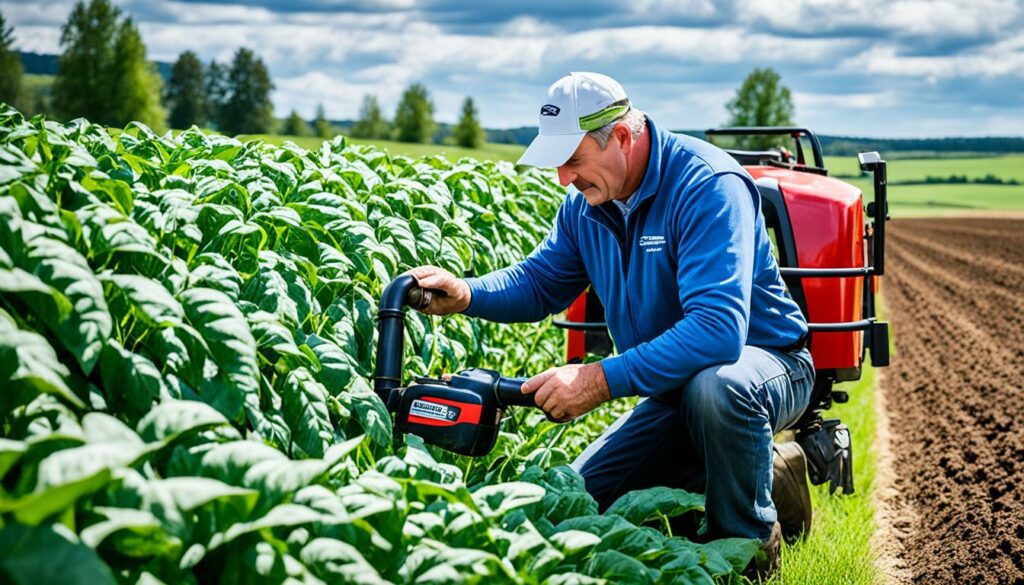
Musculoskeletal problems are a big deal for those in agriculture. In Iran, many farm workers reported these problems. The USA sees more back pain in farming than in other jobs.
Simple changes in tools and how we work can help a lot. For example, new ways to manage weeds reduce the physical work needed. Using machines to control weeds in crops also helps the workers strain less.
Redesigning tools is key in preventing sprains and muscle strains. In Kansas, farmers suffered a lot from back pain. And in California, many agricultural workers faced muscle issues, especially in nurseries and vineyards.
Ergonomic measures are also crucial in forestry and green areas. Workers face dust, noise, and vibrations that harm them. It’s vital to reduce these risks, for instance, by making vibrating tools safer.
“The financial burden due to musculoskeletal injuries in agriculture can exceed $167,250,000 in direct health care costs alone. Therefore, implementing ergonomic improvements is both a health and economic imperative.”
Preventing injuries in farming is more than just avoiding accidents. It’s about keeping workers healthy in the long run. Things like better tools and work setups can prevent many health issues. In the end, making farm work safer helps everyone be healthier and more productive.
Ergonomic best practices are vital in agriculture. They help make the job safer and more productive. By using the right tools and techniques, we can lower the risk of injuries. This makes the workplace healthier.
We also need to look for possible risks and find ways to fix them. It’s about making the job fit the worker better.
Farm work often involves lifting, which can hurt your back. It’s key to lift things the right way. This means keeping your back straight, bending your knees, and lifting with your legs.
These steps can help cut down on back pain and other injuries. Back pain is more common among farm workers than other jobs. So, it’s important to learn these lifting tips.
Special tools that are easy to use are important in agriculture. Ergonomic tools make jobs easier and more comfortable. They can also help prevent muscle and joint issues.
For instance, tools with long handles cut down on bending over. Padded grips reduce stress on your hands and arms. These small changes can make a big difference in staying injury-free.
Good posture is key in keeping your body safe from harm. Workers should stand and sit straight. They should keep their shoulders relaxed to avoid hurting themselves.
Taking breaks and stretching can also help. These habits fight the stiffness that comes from doing the same tasks over and over. According to the ILO, good ergonomic practices can lessen the chance of getting hurt at work.
By using ergonomic best practices and checking for possible risks daily, we can make farms safer. These steps not only lower injuries but also help farms run better.
Making sure farm work is safe is key for those in charge. They have to show the right way by putting in place strong safety rules. Studies from 1990 to 2017 in 195 countries show how serious musculoskeletal issues are. So, making farms ergonomically safe is really important.
To keep the farm safe, managers need to look for things that could cause harm. They use tools like ALLA and REBA to check how risky farm jobs are. By finding and fixing dangerous tasks, such as lifting heavy things or working in a bad position, they cut down on injuries. Just like using REBA helped make forestry jobs safer.
It’s also vital to train farm workers well. They should learn ways to avoid getting hurt over time, which is a big problem at work. Training covers how to lift properly and use tools that are good for the body. OSHA guides say it’s important to stop injuries before they happen, especially in places like meatpacking where people often get hurt at work.

Buying the right tools and gear is crucial too. Things like tools that check how you stand or move can help like they do in making tiles or rescuing people. Spending money on good gear not only keeps workers from getting too tired but also makes the job easier. Looking at how other jobs improve safety by spending on the right things shows it’s worth it.
But the most important thing is to make everyone care about working safely. A place where getting along and working hard without getting hurt matters most is the goal. OSHA and NIOSH, with lots of advice, can help set up safety steps. Even small farms can do a lot with free help from OSHA.
So, farm managers do a lot to keep the place safe and running well. By focusing on safety from the start and always, farms become a great, safe place to work.
Training in ergonomics is key for keeping farm workers safe and healthy. It gives them the skills they need to do their jobs well. Since farming can be dangerous, this training is critical. Because the work is hard, injuries are more common in farming than in other jobs. This makes training essential.
Courses for farm workers cover many safety topics. They learn about danger signs, using safety gear, how to stay safe around electricity, and keeping their workplace clean. Training also focuses on ergonomics. This means learning how to avoid injuries like back pain, and sore shoulders and arms.
Many farm injuries are caused by bad lifting or using tools wrong. But, teaching workers the right way to lift heavy things or how to use tools can help a lot. Just in California, back injuries cost more than $22 million every year. This shows the importance of teaching workers safe, healthy ways to work.
Ergonomics matches job tasks with what the body can safely do. This can stop muscle and bone injuries. It’s about making work easier and safer for workers. This way, farms can run smoothly and workers stay healthy.
Training also shows workers how they can personally keep safe. They learn what to look out for and how to work in safer ways. When workers take part in their own safety, everyone wins. This also shows why training is always needed, to stop injuries and keep farming a safe job.
Key Statistics on Ergonomic Training Impact:
| Factor | Statistic | Impact |
|---|---|---|
| Fatal Injury Rate in Agriculture | 20 deaths per 100,000 workers | Highlights the critical need for ergonomic training |
| Common Symptoms Reported | Backaches, shoulder, arm pain | Addresses specific ergonomic hazards in training |
| Workplace Injury Costs | $167,250,000 in direct healthcare costs | Financial benefits of preventing injuries through training |
| Ergonomic Programme Benefits | Improved posture, reduced force, decreased repetition | Prevents WMSDs, enhances productivity |
By including ergonomics in worker training, farming becomes safer and more efficient. This knowledge helps farm workers stay away from injuries. It also means less money spent on healthcare. And most importantly, it keeps farm workers healthy.
Technology is changing how we keep farmers safe from injuries. Musculoskeletal disorders (MSDs) are common among those who work the land. This is why new methods are vital to cut down these dangers. Old ways like just watching how someone stands or moves, and asking them about it can be slow and not always right. But now, devices you wear, like accelerometers and inertial measurement units (IMUs), have made big steps. They check how our bodies move and stand, making sure we can do our jobs without hurting ourselves.
Adding Artificial Intelligence (AI) and lots of technologies has made things even better. Now, we can let computers ‘see’ and figure out how we’re standing or moving. They use tools like image parsing, posture guessing, and skeletal tracking for this. Tools such as OpenPose, PoseNet, and MoveNet are very accurate in spotting how we pose. They make farming tasks safer. Thanks to these new ways, we’re making farming a better, less risky job.
Another boost comes from sharing what we learn between devices. This way, the system gets better and better at spotting dangers. Even with different weather, clothes, and personal shapes, these tools hold strong. They lay a strong base for a safer, more productive farm life. Using this tech not only helps tackle MSDs but also makes farms places of health and safety. It’s key to cutting dangers and keeping farms going strong, making sure farming remains a safe, sustainable work.
To assess ergonomic risks on farms, watch tasks directly and talk to farm workers. Also, check injury records at the workplace. This helps find key risks like using machinery, moving things by hand, and working with farm animals.
Ergonomic risk assessments are key to avoiding WMSDs – work-related aches and pains. They show us unsafe jobs, so we can make them better for workers. This lowers injuries and costs, making farms safer.
To check risks, focus on how machines are used, moving stuff by hand, and working with animals. This finds dangers like bad posture, too much repeating, or working too hard. Then, we can fix these issues for a safer farm.
Many workers suffer back and arm pains from certain tasks. Address these with good ergonomic practices to keep workers healthy.
Start by watching how tasks are done and talking to workers. Also, review injury reports. This approach helps to find and fix risks wisely, keeping farmers safe.
Use checklists, site surveys, and tools to check posture for spotting risks. These are crucial for making farms safe.
Look at each job to see which might cause more injuries. Focus on tasks with lots of repeats, hard work, or bad positions to make them safer.
Change tools or how work is done to cut down on hard jobs. Following good ergonomic rules makes farms safer and more productive.
By redesigning tools and work, you make moving things less risky. This can greatly lower muscle injuries, keeping farms safer.
Teach workers the right way to lift and how to use tools safely. Keep checking how they work to make sure these good practices stick.
It’s up to farm managers to spot and fix risky tasks and to train workers. They should make sure the workplace cares for worker health. Good management makes farms safer.
Training keeps workers up-to-date on safe practices, teaching them how to avoid injuries. This helps all workers stay healthy while on the job.
New tech can spot bad practices early and suggest better ways. It helps make tools and ways of working safer. This kind of tech training improves farm safety.